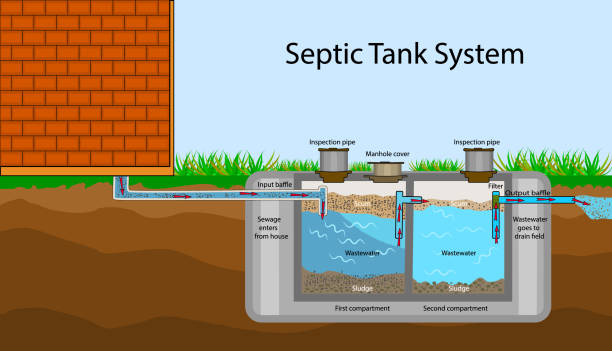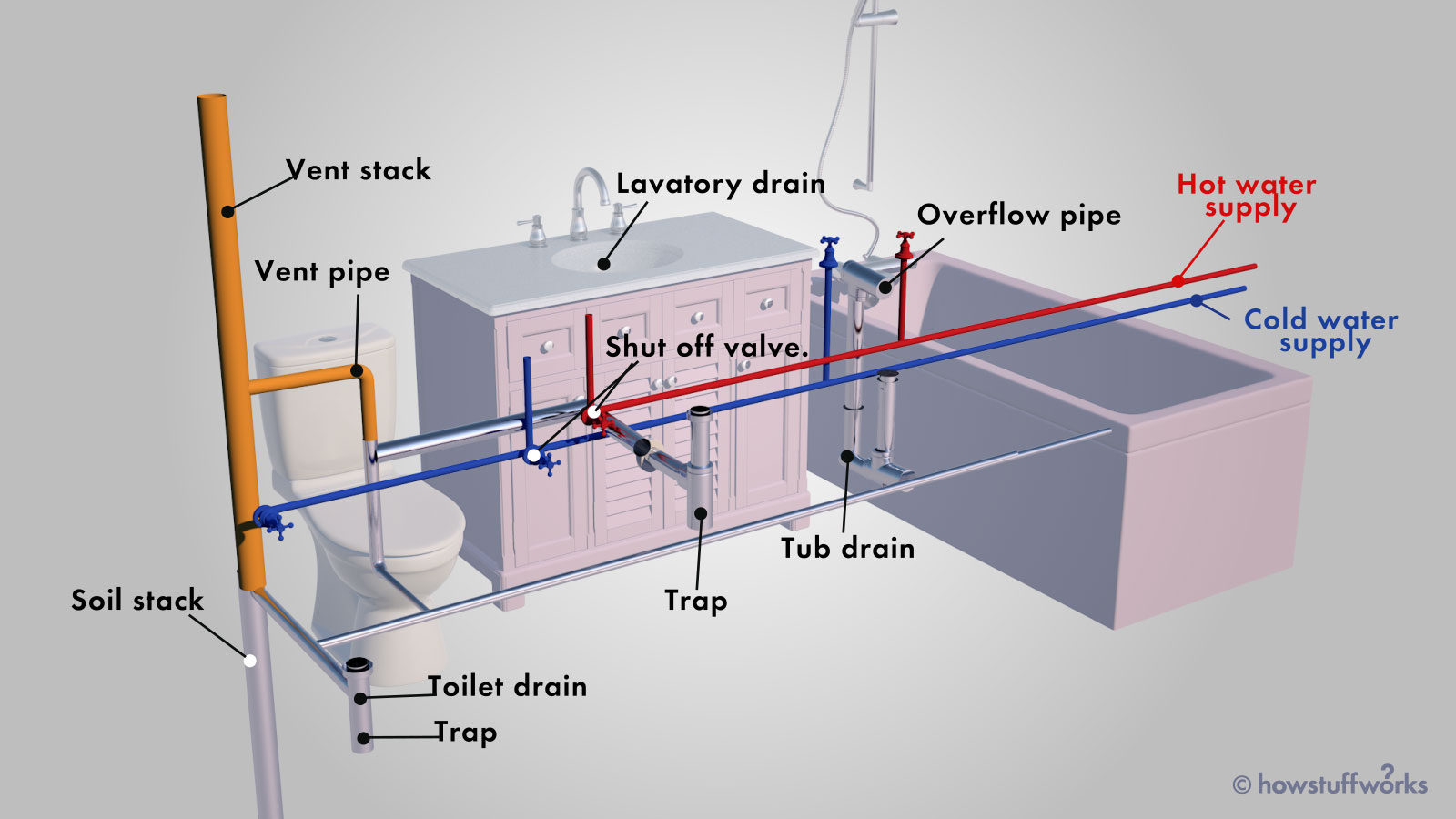The Complete Guide to Your House's Plumbing System Anatomy
The Complete Guide to Your House's Plumbing System Anatomy
Blog Article
Are you currently trying to find answers concerning The Inner Workings of Your Home's Plumbing?

Comprehending how your home's pipes system functions is essential for every single property owner. From delivering tidy water for drinking, food preparation, and showering to safely getting rid of wastewater, a well-kept pipes system is crucial for your household's wellness and comfort. In this thorough guide, we'll explore the complex network that makes up your home's plumbing and offer pointers on upkeep, upgrades, and taking care of typical concerns.
Introduction
Your home's pipes system is more than simply a network of pipelines; it's a complex system that guarantees you have access to tidy water and efficient wastewater removal. Knowing its parts and how they collaborate can aid you prevent costly repair services and ensure whatever runs efficiently.
Fundamental Elements of a Plumbing System
Pipes and Tubes
At the heart of your plumbing system are the pipelines and tubes that lug water throughout your home. These can be constructed from various materials such as copper, PVC, or PEX, each with its benefits in regards to resilience and cost-effectiveness.
Fixtures: Sinks, Toilets, Showers, and so on.
Fixtures like sinks, bathrooms, showers, and bath tubs are where water is made use of in your home. Comprehending exactly how these fixtures link to the pipes system assists in detecting troubles and intending upgrades.
Valves and Shut-off Points
Valves manage the circulation of water in your pipes system. Shut-off shutoffs are crucial during emergencies or when you need to make repair services, allowing you to separate parts of the system without disrupting water circulation to the entire home.
Water System
Key Water Line
The main water line attaches your home to the metropolitan water supply or a private well. It's where water enters your home and is dispersed to various fixtures.
Water Meter and Pressure Regulatory Authority
The water meter actions your water use, while a pressure regulator makes certain that water streams at a risk-free stress throughout your home's plumbing system, protecting against damages to pipelines and components.
Cold Water vs. Warm water Lines
Understanding the difference in between cold water lines, which provide water straight from the primary, and hot water lines, which bring heated water from the water heater, helps in repairing and preparing for upgrades.
Drain System
Drain Pipes Piping and Traps
Drain pipes bring wastewater away from sinks, showers, and toilets to the drain or septic tank. Catches protect against sewage system gases from entering your home and additionally catch particles that might trigger obstructions.
Air flow Pipelines
Air flow pipes permit air right into the water drainage system, stopping suction that might reduce drain and trigger catches to vacant. Appropriate ventilation is vital for maintaining the honesty of your pipes system.
Significance of Correct Drain
Guaranteeing proper drainage protects against backups and water damages. On a regular basis cleaning up drains and maintaining catches can stop costly fixings and extend the life of your pipes system.
Water Heater
Kinds Of Water Heaters
Hot water heater can be tankless or standard tank-style. Tankless heating units heat water on demand, while tanks keep heated water for prompt usage.
How Water Heaters Link to the Plumbing System
Recognizing just how water heaters connect to both the cold water supply and hot water circulation lines assists in diagnosing concerns like insufficient warm water or leaks.
Upkeep Tips for Water Heaters
Regularly flushing your hot water heater to remove debris, examining the temperature setups, and inspecting for leakages can extend its life-span and enhance power effectiveness.
Usual Plumbing Concerns
Leaks and Their Reasons
Leaks can happen due to aging pipelines, loose installations, or high water pressure. Resolving leaks promptly avoids water damages and mold development.
Clogs and Obstructions
Clogs in drains and commodes are typically brought on by flushing non-flushable things or a buildup of grease and hair. Utilizing drainpipe screens and being mindful of what drops your drains can prevent blockages.
Indicators of Plumbing Issues to Expect
Low water stress, slow-moving drains pipes, foul odors, or unusually high water expenses are indicators of possible plumbing issues that must be attended to without delay.
Plumbing Maintenance Tips
Normal Inspections and Checks
Set up annual plumbing assessments to capture issues early. Search for signs of leaks, deterioration, or mineral accumulation in taps and showerheads.
Do It Yourself Maintenance Tasks
Easy jobs like cleaning tap aerators, looking for commode leakages making use of dye tablets, or protecting subjected pipelines in cold climates can stop major plumbing issues.
When to Call an Expert Plumbing Technician
Know when a pipes concern requires professional competence. Trying complicated repair services without correct expertise can cause more damages and greater fixing costs.
Upgrading Your Plumbing System
Reasons for Upgrading
Upgrading to water-efficient fixtures or changing old pipelines can boost water top quality, lower water costs, and increase the worth of your home.
Modern Pipes Technologies and Their Advantages
Explore technologies like smart leak detectors, water-saving toilets, and energy-efficient hot water heater that can conserve cash and lower ecological influence.
Price Factors To Consider and ROI
Determine the in advance expenses versus long-lasting cost savings when taking into consideration plumbing upgrades. Many upgrades pay for themselves via lowered energy costs and less repair work.
Environmental Influence and Preservation
Water-Saving Components and Appliances
Installing low-flow taps, showerheads, and bathrooms can substantially decrease water use without sacrificing performance.
Tips for Lowering Water Use
Basic practices like dealing with leakages immediately, taking shorter showers, and running full lots of washing and meals can conserve water and reduced your energy expenses.
Eco-Friendly Plumbing Options
Take into consideration sustainable pipes products like bamboo for flooring, which is durable and eco-friendly, or recycled glass for counter tops.
Emergency Preparedness
Actions to Take During a Plumbing Emergency situation
Know where your shut-off valves are located and just how to shut off the supply of water in case of a ruptured pipe or significant leak.
Relevance of Having Emergency Situation Contacts Convenient
Keep contact info for regional plumbers or emergency situation solutions easily offered for fast response throughout a plumbing crisis.
Do It Yourself Emergency Fixes (When Relevant).
Temporary solutions like utilizing air duct tape to spot a leaking pipe or placing a pail under a dripping tap can minimize damage till an expert plumber shows up.
Conclusion.
Comprehending the anatomy of your home's plumbing system encourages you to preserve it effectively, saving money and time on fixings. By adhering to normal maintenance regimens and staying notified about contemporary pipes innovations, you can ensure your pipes system operates effectively for several years to come.
HOW YOUR PLUMBING SYSTEM WORKS
Which Pipes Do What?
Blue lines = fresh water supply entering the building
Red lines = hot water supply entering the building
Grey lines = pipes carrying waste away from the building and venting pipes carrying gases away from the building (through the roof)
YOUR MAIN PLUMBING SYSTEMS
There are two main plumbing systems that support your home s basic plumbing needs one that brings clean water into your home, and one that sends dirty water away from your home. Connected to the toilet, bath, shower, and other faucets in your home, these two systems keep your water flowing in the right directions.
ACCESSING FRESH WATER
Fresh and clean water is brought into your home through the main water supply line . Filtered through one pipe, this water is pressured to flow into the various fixtures in your home at any given time.
This water can be sourced from a well located on your property, a pond or river (mostly cottages), or, as in most cases, from the city s municipal water treatment centre. However, it is important to note that water that is untreated, such as the water siphoned from ponds or rivers, may not be safe to drink. Personal water supplies always need to be treated for hardness and contaminants before consumed.
MUNICIPAL WATER SUPPLIES
Improve taste and odour
Remove sediment
Eliminate hardness
Reduce chlorine
COLD WATER SUPPLY VS. HOT WATER SUPPLY
Cold water flows into your home or building through the service line, which then distributes hot or cold water to your fixtures. This line is most commonly run through a central column that runs floor to floor. Hot water runs in short and straight pipes as the longer the pipeline, the more heat that will be lost in the transfer. Having shorter pipes also allows residents to access hot water more quickly.
WASTE WATER SYSTEM
Your wastewater system is divided into two parts pipes that send wastewater away from your home and venting pipes that send sewer gas away from your home. Sewage water travels through pipes that flush the water and waste towards local sewers that are operated and managed by your city or town. Most sewer systems rely on gravity to move the wastewater to where it needs to go.
The further away from your toilet or sink, the larger wastewater pipes become. This allows for waste to be disposed of from various parts of your home or business at once without pipe blockages. The angle and flow of these pipes are also essential for keeping your waste pipes clear of build up.
https://harrisplumbing.ca/how-your-home-plumbing-system-works/

HOW YOUR PLUMBING SYSTEM WORKS
Which Pipes Do What?
YOUR MAIN PLUMBING SYSTEMS
There are two main plumbing systems that support your home s basic plumbing needs one that brings clean water into your home, and one that sends dirty water away from your home. Connected to the toilet, bath, shower, and other faucets in your home, these two systems keep your water flowing in the right directions.
ACCESSING FRESH WATER
Fresh and clean water is brought into your home through the main water supply line . Filtered through one pipe, this water is pressured to flow into the various fixtures in your home at any given time.
This water can be sourced from a well located on your property, a pond or river (mostly cottages), or, as in most cases, from the city s municipal water treatment centre. However, it is important to note that water that is untreated, such as the water siphoned from ponds or rivers, may not be safe to drink. Personal water supplies always need to be treated for hardness and contaminants before consumed.
MUNICIPAL WATER SUPPLIES
COLD WATER SUPPLY VS. HOT WATER SUPPLY
Cold water flows into your home or building through the service line, which then distributes hot or cold water to your fixtures. This line is most commonly run through a central column that runs floor to floor. Hot water runs in short and straight pipes as the longer the pipeline, the more heat that will be lost in the transfer. Having shorter pipes also allows residents to access hot water more quickly.
WASTE WATER SYSTEM
Your wastewater system is divided into two parts pipes that send wastewater away from your home and venting pipes that send sewer gas away from your home. Sewage water travels through pipes that flush the water and waste towards local sewers that are operated and managed by your city or town. Most sewer systems rely on gravity to move the wastewater to where it needs to go.
The further away from your toilet or sink, the larger wastewater pipes become. This allows for waste to be disposed of from various parts of your home or business at once without pipe blockages. The angle and flow of these pipes are also essential for keeping your waste pipes clear of build up.
https://harrisplumbing.ca/how-your-home-plumbing-system-works/
I stumbled upon that piece about Exploring Your Homes Plumbing Anatomy when doing a search on the internet. Enjoyed reading our blog posting? Please share it. Let somebody else find it. Thanks so much for taking the time to read it.
Check Us Out Report this page